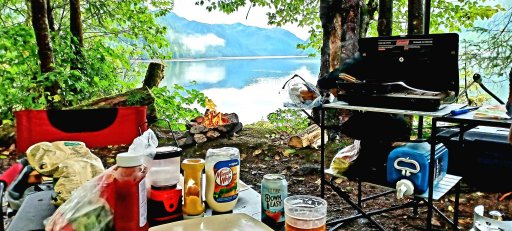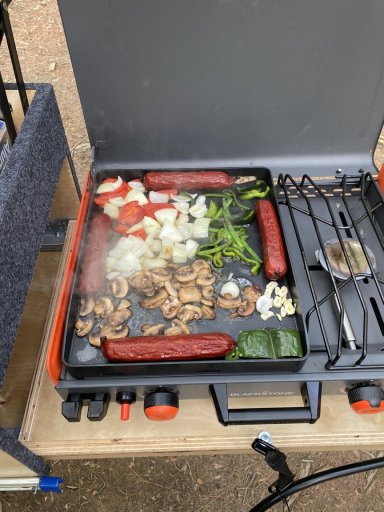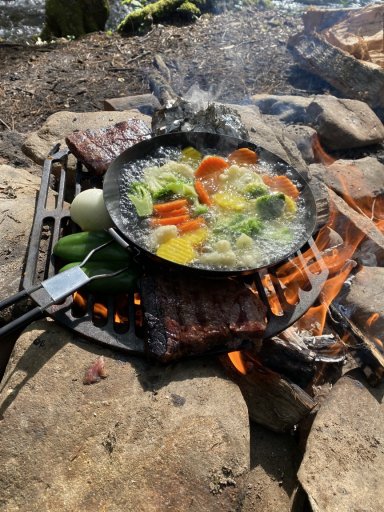Great info!I found that most people overestimate the power requirements for induction cooking and massively underestimate the inefficiency of propane – the slightest wind can bring efficiency down way below 1/3 of the efficiency of induction. Even taking the number above regarding a 20lbs bottle having 95 times the energy of a 100Ah 12V battery, following that math means 43 times the capacity I have, at best efficiency for the propane that would result in about 14 times usable power. And that's in the best of circumstances, no wind and a good stove or range – the efficiency number is from the Department of Energy for home use. Which doesn't account for wind driving the flame away from your pot – which can easily take away another 50 to 80% of the produced heat.
Most of my cooking happens at 400 to 600W according to my Kill-A-Watt meter. Initial heat up with 1200 to 1500W, I don't go full high since I don't want to kill my pots and pans, then I can turn it down significantly. We heat water with an electric kettle, it's not as fast as a MSR Windburner, but not much slower either.
I've tracked a few things I regularly cook regarding their power consumption:
Task Ah needed Boiling water for coffee or tea for two people, three to four times a day 5Ah per two big mugs Cooking scrambled eggs, no other incredients, we will do this only sometimes, not every day 5Ah Cooking a one pan dish with chicken, vegetables, rice (pre-cooked rice) up to 40Ah (but that's an upper limit, did it twice, one was around 30Ah, the other around 37Ah, it depends on the incredients) Cooking noodles for two 15Ah Re-heating left overs 5Ah to 10Ah Scrambled eggs with veggies (including mushrooms which take rather long on high(ish) heat to evaparate moisture and cook down a bit) 20Ah
So, most of these take a max of 20% of my overall battery capacity. We rarely ever drive less than two hours per day which would re-charge 50% of the total capacity I have which I have so far not ever used in a single day. Plus there is solar. Currently I don't have solar installed, but plan on a 150W CIGS panel at some point. That should extend the time we could stay in a single place to three days depending on weather. We haven't stayed longer than two days in a single place so far.
Oh, and IF we go into a hotel, we can use our gear in the room to cook there ...
You sound like you might like my testing post for how much Watt-hrs used by various cooking devices. Here is a link:
Anyone done a test for A/H used with electric hot plate vs induction cooktop vs electric kettle for boiling water
My googlfu powers are not up to snuff I cant find a vid or anything on amp hours used to boil water sure they show that some can boil water faster than others but does that mean that they used the least amount of power I dont know thats why I am looking if by chance you have come across and info...
















